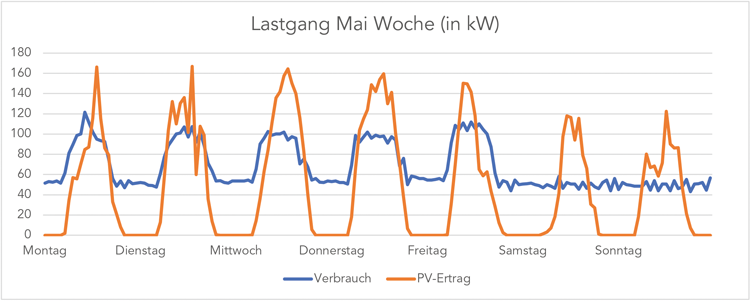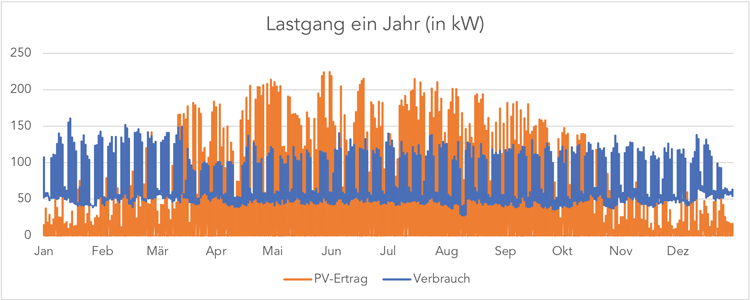The scope of services of M&P
- Successful implementation of a feasibility study for a 282 kWp PV system, including subsequent planning.
- Yield simulation based on a true-to-scale 3D model of the building with the planned PV configuration.
Interdisciplinary M&P teams from Hamburg and Braunschweig have successfully carried out a feasibility study for a 282 kWp PV system in Hamburg-Bergedorf, including subsequent planning. The client is the Fraunhofer Research Institute for Additive Production Technologies (IAPT) located there.
A photovoltaic system avoids CO2 emissions and increases self-sufficiency – that also applies to the IAPT, of course. But does a project like that make sense at the planned location in Hamburg-Bergedorf? Would it become a technically feasible and financially viable concept? Those very questions have been investigated by an agile team from M&P.
We networked our expertise to develop a feasibility study for the photovoltaic potential and, in the process, set the course for the further planning and tendering of the system. Our interdisciplinary team of M&P experts from Hamburg and Braunschweig, which was put together especially for this project, carried out various tests as part of the study, including a yield simulation based on a true-to-scale 3D model of the IAPT building with the planned PV configuration.

Comparison of consumption and PV load profile in a productive week in May. At times when the solar yield exceeds consumption, the excess power is fed into the public grid. These periods are ideal for optimised self-consumption with manageable consumers.

Comparison of consumption and PV load profile over one year to determine the self-consumption rate as a core economic criterion. The characteristic consumption load profile is a high, constant base load of approx. 50 kW with a pronounced midday peak on weekdays of up to 150 kW in isolated cases.
In our simulations, we were able to prove the feasibility and optimally dimension the PV system for efficient operation: with a yield of 262 MWh/year, it would be able to cover 32% of IAPT’s electricity consumption and save 123 metric tons of CO2 annually. On the basis of this, we were commissioned by Fraunhofer IATP with the planning, in which colleagues from Hamburg (administration) and Braunschweig (energy and engineering) were also involved. The corresponding planning documents have already been approved and are currently being put out to tender for implementation and commissioning, if possible before the end of this year.
Interdisciplinary, customer-oriented, practice-relevant: the principles of the M&P consulting philosophy are also reflected in our feasibility study and planning. This is how we are keeping our customers on the bright side of the energy transition.
Selected results of the feasibility study and yield simulation:
- Installable power: 282 kWp
- Simulated yield: 262 MWh/year
- Solar coverage (self-sufficiency): 32% of IAPT electricity consumption
- Self-consumption rate (alignment of consumption and generation load profiles): 75%
- CO2 savings: 123 metric tons per year
- Profit from self-consumption/feed-in: 65,000 to 80,000 euros/year (electricity costs 35 ct/kWh)
- In view of the static assessment, it is not necessary to strengthen the roof ridge. The load-bearing capacity has been confirmed by the structural engineer.
